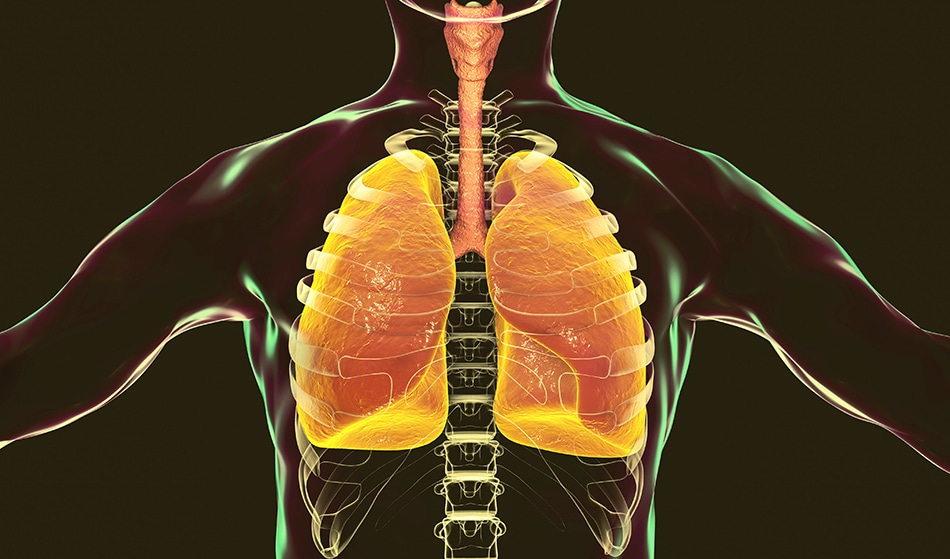 By Isabelle Robinson, M.Sc.Dec 5 2018
By Isabelle Robinson, M.Sc.Dec 5 2018Mike Tonkin and Anna Liu have used their architectural knowledge to develop a new prototype stent. Normally, medical stents are mesh tubes which are fitted into the windpipe to keep it open. The new prototype has been designed for use in tracheal transplant surgery and will be able to adapt to any patient’s throat.

Kateryna Kon / Shutterstock
Tonkin and Lui, owners of Tonkin Liu, an architecture studio in London, UK, used an unusual single surface structural design called a shell lace structure as inspiration for the prototype stent. While traditional stents are tubular, Tonkin and Lui’s design is C-shaped, so that it can fit every patient’s throat.
Similar to the stents currently in circulation, the prototype has a perforated surface to allow for smooth drug delivery and prevent infection of the wound after surgery. The stent is made from medical grade silicone, which is known to be an inert substance.
What makes the stent unique is its ability to fit the individual shape of every patient’s throat. Doctors can turn the item inside-out and insert it into the windpipe. The stent will then unfurl to fit the patient’s shape and - thanks to external pressure from the windpipe - the stent will not be in danger of moving.
The newly-developed stent has been called "a remarkable and unprecedented stent invention, that is ground-breaking in the context of currently available devices," by Martin Birchall, professor of laryngology at the University College of London.
The architects spent a decade researching shell lace structures as a sheet material in collaboration with researchers from the Natural History Museum. The sheets use design principles that can be found in the natural world (e.g. in the physiology of mollusks and plants). Tonkin and Lui had originally used the research to create ultra-lightweight pavilions, bridges and towers before miniaturizing their design for medical purposes.
The team were inspired after attending a talk in 2014 in which a clinical researcher spoke of the problem of ill-fitting stents.
The two architects worked closely with the civil engineering firm, Arup, to develop the concept, and were able to secure funding via the British government’s innovation fund, Innovate UK, after just one year. Together, they were able to adapt the architectural design to be approximately 500 times smaller.
The start the project, Tonkin Lui scanned and 3D-printed a pig’s trachea which is known to be very similar to that of a human’s. Though the model was five times larger than life-size, it gave the designers a good starting point for their research.
"To us it was no different to observing the particular characteristics of a site. What were its peculiarities, the demands and the opportunities?" Liu explained.
It was found that the trachea was made of a series of C-shaped rings, connected by soft tissue. The C shaped ring moved up and down at will and there was a flexible tissue spanning the gap of the C to make up a tube. These findings were invaluable to the researchers, who were able to use this information to create and test their stents.
"We mimicked these characteristics through a series of simple and intuitive rubber band models, which would later prove to be key to our invention," continued Lui.
Though the stent is currently awaiting an official patent, everyone involved in the project hopes that the stent can be used in trachea transplant surgery in the near future.
"Our aim is now to bring the Shell Lace Stent to the manufacturing stage and see it bring tangible benefits to patients globally," said Tonkin.
Tonkin Lui have attributed their success to their knowledge of cutting-edge technology and manufacturing methods. The company believes that architects have a lot to offer the medical profession when it comes to medical tool design.
"The advancement of these tools in the past five to ten years has meant that bespoke and complex forms can be made more responsively and affordably," Lui stated, "This suits the tools' application to designing a much more bespoke, formally complex, fit-for-purpose device for different parts of the human body."
Disclaimer: The views expressed here are those of the author expressed in their private capacity and do not necessarily represent the views of AZoM.com Limited T/A AZoNetwork the owner and operator of this website. This disclaimer forms part of the Terms and conditions of use of this website.